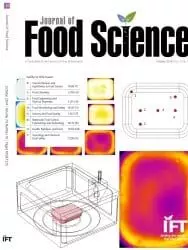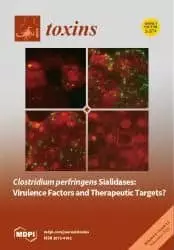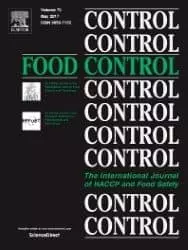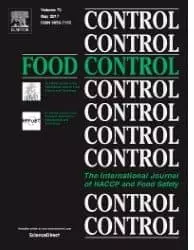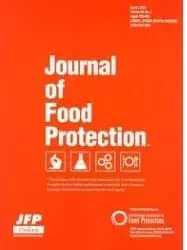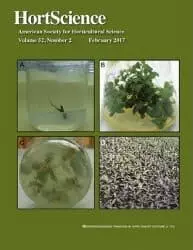
This study evaluated the efficacy of individual treatments (thermosonication [TS+DW] and slightly acidic electrolyzed water [SAcEW]) and their combination on reducing Escherichia coli O157:H7, Listeria monocytogenes, and spoilage microorganisms (total bacterial counts [TBC], Enterobacteriaceae, Pseudomonas spp., and yeast and mold counts [YMC]) on fresh-cut kale. For comparison, the antimicrobial efficacies of sodium chlorite (SC; 100 mg/L) and sodium hypochlorite (SH; 100 mg/L) were also evaluated. Each 10 g sample of kale leaves was inoculated to contain approximately 6 log CFU/g of E. coli O157:H7 or L. monocytogenes. Each inoculated or uninoculated samples was then dip treated with deionized water (DW; control), TS+DW, and SAcEW at various treatment conditions (temperature, physicochemical properties, and time) to assess the efficacy of each individual treatment. The efficacy of TS+DW or SAcEW was enhanced at 40 C for 3 min, with an acoustic energy density of 400 W/L for TS+DW and available chlorine concentration of 5 mg/L for SAcEW. At 40 C for 3 min, combined treatment of thermosonication 400 W/L and SAcEW 5 mg/L (TS+SAcEW) was more effective in reducing microorganisms compared to the individual treatments (SAcEW, SC, SH, and TS+DW) and combined treatments (TS+SC and TS+SH), which significantly (P < 0.05) reduced E. coli O157:H7, L. monocytogenes, TBC, Enterobacteriaceae, Pseudomonas spp., and YMC by 3.32, 3.11, 3.97, 3.66, 3.62, and >3.24 log CFU/g, respectively. The results suggest that the combined treatment of TS+SAcEW has the potential as a decontamination process in fresh-cut industry.
In this study, the effects of electrolyzed oxidizing water (EOW) on the prevention of enzymatic browning of fresh-cut Jiu Jinhuang Chinese yam were investigated. The yams were immersed in the inhibitors for 25 min at 20 C. Compared with the tap water (TW) treatment, the chromatic attributes were significantly different after 72 h of storage (P < 0.05). The activities of polyphenol oxidase (PPO, EC 1.10.3.1), peroxidase (POD, EC 1.11.1.7), and L-phenylalanine ammonia lyase (PAL, EC 4.3.1.5) were inhibited when measured at 24 h. The contents of phenolic acids, including gallic and chlorogenic acid, in the group treated with the slightly acidic electrolyzed water (SAEW) were higher than those treated with TW and neutral electrolyzed water (NEW). The group treated with NEW had the highest total phenol content (P < 0.05, at 24 h), while the group treated with SAEW had the highest flavonoid content (P < 0.05) during storage. Without being treated with inhibitors, the Km and Vmax values of yam PPO were 0.0044 mol/L and 0.02627 U/min, respectively, and the Ki of samples treated with SAEW and citric acid (CA) were 15.6607 and 2.3969 mol/L, respectively. These results indicate that EOW is beneficial as a browning inhibitor.
Aflatoxins, a group of extremely toxic mycotoxins produced by Aspergillus flavus, A. parasiticus and A. nomius, can occur as natural contaminants of certain agricultural commodities, particularly maize. These toxins have been shown to be hepatotoxic, carcinogenic, mutagenic and casevere human and animal diseases. The effectiveness of neutral electrolyzed oxidizing water (NEW) on aflatoxin detoxification was investigated in HepG2 cells using several validation methodologies such as the 3-(4,5-dimethylthiazol-2-yl)-2,5-diphenyltetrazolium bromide assay, the induction of lipid peroxidation, the oxidative damage by means of glutathione modulation, the Ames test and the alkaline Comet assay. Our results showed that, after the aflatoxin-contaminated maize containing 360 ng/g was soaked in NEW (60 mg/L available chlorine, pH 7.01) during 15 min at room temperature, the aflatoxin content did not decrease as confirmed by the immunoaffinity column and ultra performance liquid chromatography methods. Aflatoxin fluorescence strength of detoxified samples was similar to untreated samples. However, aflatoxin-associated cytotoxicity and genotoxicity effects were markedly reduced upon treatment. According to these results, NEW can be effectively used to detoxify aflatoxin-contaminated maize.
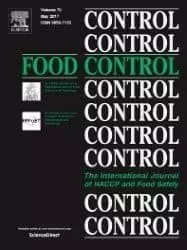
In the present study, the disinfection efficacy on fresh-cut cilantro of the combination of strongly acidic electrolyzed water (AcEW) and alkaline electrolyzed water (AlEW) was evaluated, in comparison with single slightly acidic electrolyzed water (SAEW) and single AcEW treatments. The populations of E. Coli O78 on inoculated cilantro treated by AlEW 5 min + AcEW 5 min, was not detected while 3.43 and 3.73 log10 CFU/g in the AlEW 2.5 min + AcEW 2.5 min and AcEW 2 min + AlEW 2 min + AcEW 2 min treatments respectively. Our results implied that the bactericidal abilities of the combination of AlEW and AcEW treatments were higher than that of single AcEW and SAEW, which also was demonstrated microscopically by scanning electron microscopy (SEM). Moreover, the efficacy of combination of AcEW and AlEW in reducing natural micro flora on fresh-cut cilantro was also evaluated compared with single AcEW and SAEW. The results showed that the combination of AlEW and AcEW had stronger sterilization ability than single AcEW and SAEW. Considering the utilizations of AlEW and disinfection efficacy, we suggest that the combination of AlEW and AcEW may also be a better choice in fresh-cut produce.
Food Microbiology 51 (2015): 154-162
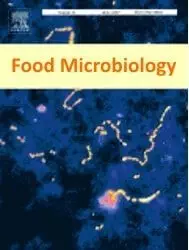
This study evaluated the efficacy of thermosonication combined with slightly acidic electrolyzed water (SAcEW) on the shelf life extension of fresh-cut kale during storage at 4 and 7 C. Each kale (10 0.2 g) was inoculated to contain approximately 6 log CFU/g of Listeria monocytogenes. Each inoculated or uninoculated samples was dip treated at 40 C for 3 min with deionized water, thermosonication (400 W/L), SAcEW (5 mg/L), sodium chlorite (SC; 100 mg/L), sodium hypochlorite (SH; 100 mg/L), and thermosonication combined with SAcEW, SC, and SH (TS + SAcEW, TS + SC, and TS + SH, respectively). Growths of L. monocytogenes and spoilage microorganisms and changes in sensory (overall visual quality, browning, and off-odour) were evaluated. The results show that lag time and specific growth rate of each microorganism were not significantly (P > 0.05) affected by treatment and storage temperature. Exceeding the unacceptable counts of spoilage microorganisms did not always result in adverse effects on sensory attributes. This study suggests that TS + SAcEW was the most effective method to prolong the shelf life of kale with an extension of around 4 and 6 days at 4 and 7 C, respectively, and seems to be a promising method for the shelf life extension of fresh produce.
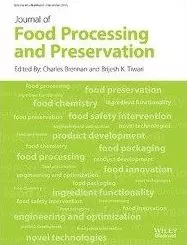
The disinfection efficacy of acidic electrolyzed water (AEW) on the fresh-cut vegetables has been recognized. However, the application of AEW in the fresh-keeping of fresh-cut vegetables was limited due to its low pH (<2.7) and higher available chlorine concentration (80200mg/L). In the present study, the microbial reduction and storage qualities of fresh-cut cilantro treated by slightly acidic electrolyzed water (SAEW) were evaluated. The results demonstrated that AEW, mild heat AEW, SAEW and mild heat SAEW treatments could reduce the populations on fresh-cut cilantro at 0 day. However, there were no significant differences among all the treatments during the late storage periods. SAEW and mild heat SAEW treatments could keep the firmness of fresh-cut cilantro and maintain the level of electrolyte leakage in comparison with other treatments. SAEW treatment showed the advantage in keeping the overall quality of fresh-cut cilantro compared with other treatments. SAEW may be a better choice in the storage of fresh-cut cilantro than AEW.
Acta Hortic 1065 (2015): 1599-1605
The efficacy of thin-film diamond coated electrodes (DiaCell 101) for disinfection of water artificially contaminated with Penicillium digitatum and Pseudomonas spp. was tested. Electrolysis process was performed with different operation conditions: current densities at 4, 8, and 12A and water flow rate at 150, 300, and 600 L/h. For both pathogens, the experiments were performed in water suspensions at a final concentration of 105 CFU/ml. Tap water was used as a control. The results showed that fungal spores and bacterial cells were affected by flow rate and current density applied. The higher the water flow rate the greater the inactivation of the two microorganisms which were completely suppressed at high recirculation flow (300-600 L/h/cell). Pseudomonas spp. cells were inactivated at the highest current density applied (8-12A) after 6 min of electrolysis, whereas for P. digitatum the complete inactivation was observed at the same current densities after 12 min. The results obtained suggest that the two parameters can be modulated in order to achieve significant suppression in relation to the target microorganism and to obtain an antimicrobial effect without generation of chlorine.
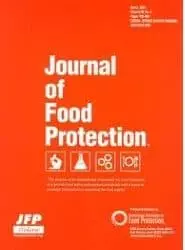
The combined effects of ultrasonication and slight acidic electrolyzed water were investigated to improve the microbial safety of brown rice against Bacillus cereus infection and to evaluate the growth kinetics of these bacteria during storage of untreated and treated rice at various temperatures (5, 10, 15, 20, 25, 30, and 35C). The results indicate that this combination treatment was bactericidal against B. cereus, resulting in an approximately 3.29-log reduction. Although B. cereus can be efficiently reduced by treatment, temperature abduring storage can allow B. cereus to recover and grow. A primary growth model (Baranyi and Roberts equation) was fitted to the raw growth data from untreated (control) and treated samples to estimate growth rate, lag time, and maximum population density, with a low standard error of the residuals (0.140) and high adjusted coefficient of determination (>0.990). The growth curves obtained from the Baranyi and Roberts model indicated that B. cereus grew more slowly on treated brown rice than on untreated brown rice. Secondary models predicting the square root of the maximum growth rate and the natural logarithm of the lag time as a function of temperature were satisfactory (bias factor = 0.993 to 1.013 accuracy factor = 1.290 to 1.352 standard error of prediction = 18.828 to 36.615%). Inactivation results and the model developed and validated in this study provided reliable and valuable growth kinetics information for quantitative microbiological risk assessment studies of B. cereus on brown rice.

The effects of ultrasound (US) and electrolyzed oxidizing (EO) water on postharvest decay of pineapple cv. Phu Lae were investigated using Fusarium sp. isolated from pineapple fruits. The effect of EO water and US irradiation on in vitro growth inhibition of Fusarium sp. was studied. Spore suspensions were treated EO water with free chlorine at 100, 200 and 300 ppm and different frequencies of 108, 400, 700 KHz and 1 MHz US irradiation for 0, 10, 30 and 60 min and incubated at 27 C for 48 h The study showed that all treatments of EO water totally inhibited the spore germination of the fungus. Additionally, US irradiation of 1 MHz for 60 min was the most effective to suppress the spore germination when compared with the control. When the fruits inoculated with Fusarium sp. were washed in EO water at 100 ppm and US irradiation or combination of US and EO water significantly inhibited the decay incidence and prolonged the shelf life of the pineapple for 20 days. Treatments had no effect on fruit quality (weight loss percentage, total soluble solids, titratable acidity, pH, and ascorbic acid). The potential for EO water in combination with US in pineapple handling systems is high, due to marked synergistic effects against fungal decay of decrowned pineapple fruit during storage.

Electrolyzed functional water (EFW) possesses broad spectrum antimicrobial activity, and is harmless to the environment and humans. In this research EFW used in germinated brown rice (GBR) production instead of tap water. The effects of the EFW on microbial growth and gamma-aminobutyric acid (GABA) content; and the effects of available chlorine concentration (ACC) and presoaking and ultrasonic pretreatment in alkaline electrolyzed water (AlEW) on GABA accumulation during germination were studied. The results showed that presoaking and ultrasonic treatment of brown rice (BR) in AlEW can significantly enhance the antimicrobial activity of acidic electrolyzed water (AEW), resulting in plate count reductions of 2.89 and 3.75 log cfu/g for strong and slightly AEW treatments, respectively, compared with tap water. The AEW achieved better promotion of GBR growth and GABA accumulation than AlEW. A statistical analysis showed that the GABA content was significantly positively correlated with GBR sprout length. The main finding of this study indicates that AEW is effective at reducing the microbial load on BR and enhances the growth and GABA accumulation of GBR.

Fusarium Head Blight (FHB), caused by a blend of Fusarium species, is a destructive fungal disease of wheat and other small grain cereals. FHB has become an important issue in food and feed industry. Moreover, the majority of FHB pathogens have the ability to synthesize a range of mycotoxins. Although several physical and chemical control measures can be taken to control these fungi in the field, research is needed to provide new techniques for control during storage and transport of cereals. Mounting evidence shows that electrolyzed oxidizing water (EOW) has antimicrobial activity and might be a useful alternative for conventional control measures. The objective of the present work, was to investigate the influence of EOW on outgrowth and germination of Fusarium spp. and deoxynivalenol (DON) production. Both an in vitro and in vivo approach were pursued. In a first approach, a screening of the main FHB causing species was conducted. Secondly, the effect of EOW on Fusarium graminearum and the effect on DON biosynthesis was investigated using a trichothecene knockout mutant. These experiments showed an increase in DON levels upon sub lethal amendments of EOW to F. graminearum spores. In addition, the reactive oxygen species H2O2 was shown to govern this induction. Finally, the work was validated on a laboratory scale via an in vivo assay using wheat grains in which the Fusarium outgrowth was measured. The present work demonstrates that EOW has potential to control Fusarium spp. in wheat grains during transport and storage although sub lethal concentrations can result in increased DON biosynthesis.

The efficiency of slightly acidic electrolyzed water (SAEW with pH 5.06.5) and strong acidic electrolyzed water (StAEW with pH less than 3.0) on the inactivation of Phytophthora parasitica var. nicotianae growth in vitro was studied. The treatment conditions included inundating time (30, 60, 120 and 300 s), treatment interval (24, 48 and 72 h) and available chlorine concentration (ACC, 30, 60 and 90 mg/L) with either StAEW (pH 2.35) or SAEW (pH 6.06). The results showed that inundating time had no effect on the efficiency of SAEW for inactivation of pure P. parasitica var. nicotianae cultures (P > 0.05). The inhibition rate increased with increasing ACC and oxidation reduction potential (ORP) at the same pH and inundating time (P < 0.01) with electrolyzed water (EW). Although the pH of SAEW (pH 6.06) was much higher than that of StAEW (pH2.35), the inhibition rate of SAEW was similar to that of StAEW (P > 0.05) at ACCs of 60 and 90 mg/L. Moreover, the experiments confirmed that the optimal treatment interval was 48 h (P < 0.01). An inhibition rate of higher than 50% of P. parasitica var. nicotianae growth in vitro was achieved with SAEW (pH 6.06, ORP 922 mV and ACC of 90 mg/L) when inundating time was 30 s and treatment interval was 48 h. The findings of this study indicate that EW may be a promising disinfectant, which can achieve inactivation of P. parasitica var. nicotianae with added benefits of reduced health hazards and environmental pollution.
Acidic electrolyzed oxidizing water (AcEW) is prepared by electrolyzing electrolyte solution using an electrolysis apparatus with an ion-exchange membrane. AcEW has a pH < 3.0, a high oxidationreduction potential (ORP) >1000 mV and a high available chlorine concentration (ACC). In this research, the effectiveness of AcEW on decontamination of aflatoxin B1 (AFB1) from naturally contaminated peanuts was investigated. According to our results, after the contaminated peanuts were soaked with AcEW solution (the ratio of liquid to solid was 5:1 (v/m)) for 15 min at room temperature, the content of AFB1 in peanuts decreased from 34.80 g/kg to around 5 g/kg. That is, about 85% AFB1 was decontaminated from contaminated samples. Ambient temperature and soaking time could markedly influence the elimination rate of AFB1 in contaminated peanuts. The elimination of AFB1 was relatively high when the ambient temperature was 25 C or 45 C. And the contaminated peanuts soaked in AcEW for 15 min can effectively decontaminate AFB1. In addition, the nutrition of peanuts didnt significantly change after treatment including the appearance of color. We also found that high level of ACC is the primary factor in AFB1 elimination. Furthermore, ACC in the form of HClO is probably more efficient than ACC in the form of ClO on AFB1 elimination.

Near neutral (pH 6.36.5) electrolyzed oxidizing water (EO water) has been demonstrated to inactivate fungi in pure culture and to mitigate infection on fruit surfaces. One possible and as effective as a once per week captan/once per week EO treatment. The once per week captan/once per week EO treatment was significantly more effective (P 0.05) than the captan once per week treatment. Dip treatments of strawberries in near neutral EO solutions (50 and 100 ppm TRC pH 6.36.5) did not leave a chlorine residue on the fruit relative to a water dip. The results from this study suggest that near neutral EO solutions could be used to manage infection of B. cinerea on strawberry plants in the field and also as a disinfection solution for harvesting equipment, greenhouses, packing houses and in commercial facilities to prevent or manage infections of B. cinerea and M. fructicola.
Journal of Food Science 76.4 (2011): C520-C524
Degradation of the 3 pesticides (acephate, omethoate, and dimethyl dichloroviny phosphate [DDVP]) by electrolyzed water was investigated. These pesticides were commonly used as broad-spectrum insecticides in pest control and high-residual levels had been detected in vegetables. Our research showed that the electrolyzed oxidizing (EO) water (pH 2.3, available chlorine concentration:70 ppm, oxidation-reduction potential [ORP]: 1170 mV) and the electrolyzed reducing (ER) water (pH 11.6, ORP: -860 mV) can reduce the pesticide residues effectively. Pesticide residues on fresh spinach after 30 min of immersion in electrolyzed water reduced acephate by 74% (EO) and 86% (ER), omethoate by 62% (EO) and 75% (ER), DDVP by 59% (EO) and 46% (ER), respectively. The efficacy of using EO water or ER water was found to be better than that of using tap water or detergent (both were reduced by more than 25%). Besides spinach, the cabbage and leek polluted by DDVP were also investigated and the degradation efficacies were similar to the spinach. Moreover, we found that the residual level of pesticide residue decreased with prolonged immersion time. Using EO or ER water to wash the vegetables did not affect the contents of Vitamin C, which inferred that the applications of EO or ER water to wash the vegetables would not result in loss of nutrition.
Electrolyzed functional water possesses a wide variety of antimicrobial activities. Electrolyzed functional water, which used to take place of tap water in producing mung bean sprouts, was studied in this paper. The results showed that electrolyzed water can not only reduce the quantity of microorganism on the surface of mung bean sprouts, but also promote the growth of sprouts. Further research showed that electrolyte leakage rate of mung bean soaked in electrolyzed water was the lowest, while the catalase s activity of mung bean soaked in electrolyzed water was the highest. All of these contribute to the high activity of mung bean
.
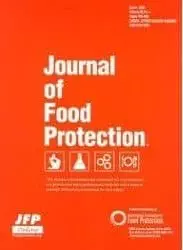
Electrolyzed oxidizing water (EOW) has been regarded as a potential environmentally friendly broad spectrum microbial decontaminant. EOW with a pH of 3.0 and oxidation reduction potential of 1,079.0 mV were generated by the electrolysis of a dilute NaCl solution (20 mM) in an electrochemical cell. The effects of EOW, 1% NaClO solution, and alkaline electrolyzed water on controlling microbial growth, germination ratio, and enrichmentof -aminobutyric acid in germinated brown rice (GBR) were evaluated in this study. Results show that EOW was the most effective at inhibiting microbial growth during germination. Rinsing the rice grains with EOW at 12-h intervals resulted in aerobic plate count reductions of 4.82 log CFU/g, while soaking resulted in bacterial count reductions of 5.38 log CFU/g after 72 h of germination. Moreover, EOW significantly enriched -aminobutyric acid content in GBR (P < 0.05); content was increased 1.6 times in grain rinsed with EOW and 1.8 times in grain soaked in EOW. The findings indicate that EOW is a feasible disinfectant for industrial GBR production.
.

The effect of electrolyzed oxidizing (EO) water in combination with ozone to control postharvest decay of tangerine was investigated. The spore suspension containing 105 conidia ml 1 of Penicillium digitatum was prepared. EO water was generated by electrolysis of various concentrations of NaCl solution (5, 25, 50% and saturated NaCl). The spore suspension was inoculated into EO water and incubated at 27 C for 1, 2, 4, 8 and 32 min. It was found that the EO water with saturated NaCl completely inhibited the spore germination of the fungus within 1 min. When the fruits inoculated with P. digitatum were washed in EO water at the same concentrations as previous experiment for 4, 8 and 16 min and stored at 5 C for 18 days, it was found that immersion of the fruit in EO water for 8 min was the most effective to reduce disease incidences. Moreover, washing fruit in EO water and kept in a refrigerated chamber at 5 C with continuous ozone exposure at a concentration of 200 mg l 1 for 2 h day 1 to extend storage life suppressed the disease incidence until 28 days. However, none of the treatments had any effect on the quality of fruit such as total soluble solids, titratable acidity, percent weight loss and peel color. Therefore EO water may be useful for surface sanitation and ozone has potential to control the recontamination of postharvest diseases in tangerine fruit in storage room.
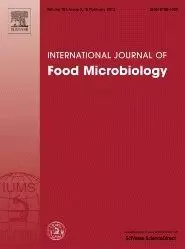
This study evaluated the potential of near-neutral (pH 6.36.5) electrolyzed oxidizing water (EO water) to inactivate pure cultures of Botrytis cinerea and Monilinia fructicola and to mitigate fungal infection of these organisms on fruit surfaces. Treatment of these organisms, in pure culture, with EO water at concentrations of 25, 50, 75, and 100 ppm total residual chlorine (TRC) and 10 min of contact time resulted in a 6 log10 spores/mL reduction of both organisms. A dip treatment or a dip and daily spray treatment of EO water were used to evaluate its ability to prevent or delay the onof surface infection on fruit during postharvest packaging and in retail shelf environments. A 10 minute dip treatment of surface inoculated peaches (M. fructicola) in EO water prevented infection for 3 days and resulted in a 12.5 incidence of infection and a disease severity rating of 6 after 5 days of storage at 25 C. Dipping of green table grapes inoculated with B. cinerea into EO water prevented infection for 7 days and resulted in a 1 incidence of infection and a disease severity rating of 2 after 10 days of storage at 25 C. A dip and daily spray of peaches with EO water prevented infection for 12 days and resulted in a 10 incidence of infection and a 6 disease severity after 14 days of storage at 25 C. A dip and daily spray of grapes with EO water prevented infection for 24 days and resulted in a 2 incidence of infection and a disease severity rating of 2 after 26 days of storage at 25 C. The results from this study suggest that these solutions may prove to be effective for postharvest sanitation of fruit surfaces prior to packaging and may increase the shelf life of the fruit in commercial settings.

The effects of acidic electrolyzed water (AcEW), alkaline electrolyzed water (AlEW), 100 ppm sodium hypochlorite (NaClO), and 1% citric acid (CA) alone, and combinations of AcEW with 1% CA (AcEW + CA) and AlEW with 1% CA (AlEW + CA) against Bacillus cereus vegetative cells and spores was evaluated as a function of temperature (25, 30, 40, 50, or 60 C) and dipping time (3 or 6 h). A 3-strain cocktail of Bacillus cereus cells or spores of approximately 107 CFU/g was inoculated in various cereal grains (brown rice, Job s tear rice, glutinous rice, and barley rice). B. cereus vegetative cells and spores were more rapidly inactivated at 40 C than at 25 C. Regardless of the dipping time, all treatments reduced the numbers of B. cereus vegetative cells and spore by more than 1 log CFU/g, except the deionized water (DIW), which showed approximately 0.7 log reduction. The reductions of B. cereus cells increased with increasing dipping temperature (25 to 60 C). B. cereus vegetative cells were much more sensitive to the combined treatments than spores. The effectiveness of the combined electrolyzed water (EW) and 1% CA was considerable in inhibiting B. cereus on cereal grains. The application of combined EW and CA for controlling B. cereus cells and spores on cereal grains has not been previously reported. Therefore, the synergistic effect of EW and CA may provide a valuable insight on reducing foodborne pathogens on fruits, vegetables, and cereal grains.
Microbial control of postharvest diseases has been extensively studied and appears to be a viable technology. Food safety must be ensured at each postharvest processing step, including handling, washing of raw materials, cleaning of utensils and pipelines, and packaging. Several commercial products are available for this purpose. The time is ripe for developing new techniques and technologies. The use of electrolyzed water (EW) is the product of a new concept developed in Japan, which is now gaining popularity in other countries. Little is known about the principle behind its sterilizing effect, but it has been shown to have significant bactericidal and virucidal and moderate fungicidal properties. Some studies have been carried out in Japan, China, and the USA on the pre- and postharvest application of EW in the field of food processing. EW may be produced using common salt and an apparatus connected to a power source. As the size of the machine is quite small, the water can be manufactured on-site. Studies have been carried out on the use of EW as a sanitizer for fruits, utensils, and cutting boards. It can also be used as a fungicide during postharvest processing of fruits and vegetables, and as a sanitizer for washing the carcasses of meat and poultry. It is cost-effective and environment-friendly. The use of EW is an emerging technology with considerable potential.

Acidic electrolyzed oxidizing (EO) water quickly kills a variety of fungi and shows promise as a broad-spectrum contact fungicide for control of foliar diseases of greenhouse-grown ornamentals. One requirement for use in the greenhouse is that EO water will not cause excessive phytotoxic symptoms on a wide variety of species. In one experiment, two applications of EO water did not damage 15 species of bedding plants. In a second experiment, EO water applied as a foliar spray three times per week for 4-7 weeks did not produce any visible phytoxicity on seven of the 12 species tested. Small, white spots were observed on flowers of geranium (Pelargonium x hortorum), impatiens (Impatiens walleriana), and vinca (Catharanthus roseus). Slight necrosis was observed on some leaf edges of petunia (Petunia x hybrida), and snapdragon (Antirrhinum majus). EO water generated from magnesium chloride produced more phytotoxicity than EO water generated by potassium chloride or sodium chloride. Phytotoxicity ratings of greater than 3 (0-10 scale) were not observed on any of the species tested. EO water caused slight damage to some plant species but, in general, appears to be safe to use as a foliar spray on a wide variety of bedding plants grown under greenhouse conditions.
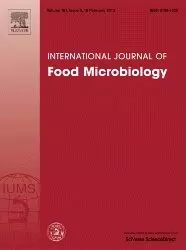
Electrolyzed oxidizing water is a relatively new concept that has been utilized in agriculture, livestock management, medical sterilization, and food sanitation. Electrolyzed oxidizing (EO) water generated by passing sodium chloride solution through an EO water generator was used to treat alfalfa seeds and sprouts inoculated with a five-strain cocktail of nalidixic acid resistant Escherichia coli O157:H7. EO water had a pH of 2.6, an oxidation reduction potential of 1150 mV and about 50 ppm free chlorine. The percentage reduction in bacterial load was determined for reaction times of 2, 4, 8, 16, 32, and 64 min. Mechanical agitation was done while treating the seeds at different time intervals to increase the effectiveness of the treatment. Since E. coli O157:H7 was released due to soaking during treatment, the initial counts on seeds and sprouts were determined by soaking the contaminated seeds/sprouts in 0.1% peptone water for a period equivalent to treatment time. The samples were then pummeled in 0.1% peptone water and spread plated on tryptic soy agar with 50 g/ml of nalidixic acid (TSAN). Results showed that there were reductions between 38.2% and 97.1% (0.22 1.56 log10 CFU/g) in the bacterial load of treated seeds. The reductions for sprouts were between 91.1% and 99.8% (1.05 2.72 log10 CFU/g). An increase in treatment time increased the percentage reduction of E. coli O157:H7. However, germination of the treated seeds reduced from 92% to 49% as amperage to make EO water and soaking time increased. EO water did not cause any visible damage to the sprouts.
Studies have demonstrated that electrolyzed oxidizing (EO) water is effective in reducing foodborne pathogens on fresh produce. This study was undertaken to determine the efficacy of EO water and two different forms of chlorinated water (chlorine water from Cl2 and Ca(OCl)2 as sources of chlorine) in inactivating Salmonella on alfalfa seeds and sprouts. Tengram sets of alfalfa seeds inoculated with a five-strain cocktail of Salmonella (6.3 104 CFU/g) were subjected to 90 ml of deionized water (control), EO water (84 mg/liter of active chlorine), chlorine water (84 mg/liter of active chlorine), and Ca(OCl)2 solutions at 90 and 20,000 mg/liter of active chlorine for 10 min at 24 2 C. The application of EO water, chlorinated water, and 90 mg/liter of Ca(OCl)2 to alfalfa seeds for 10 min reduced initial populations of Salmonella by at least 1.5 log10 CFU/g. For seed sprouting, alfalfa seeds were soaked in the different treatment solutions described above for 3 h. Ca(OCl)2 (20,000 mg/liter of active chlorine) was the most effective treatment in reducing the populations of Salmonella and non-Salmonella microflora (4.6 and 7.0 log10 CFU/g, respectively). However, the use of high concentrations of chlorine generates worker safety concerns. Also, the Ca(OCl)2 treatment significantly reduced seed germination rates (70% versus 90 to 96%). For alfalfa sprouts, higher bacterial populations were recovered from treated sprouts containing seed coats than from sprouts with seed coats removed. The effectiveness of EO water improved when soaking treatments were applied to sprouts in conjunction with sonication and seed coat removal. The combined treatment achieved 2.3- and 1.5-log10 CFU/g greater reductions than EO water alone in populations of Salmonella and non-Salmonella microflora, respectively. This combination treatment resulted in a 3.3-log10 CFU/g greater reduction in Salmonella populations than the control (deionized water) treatment.
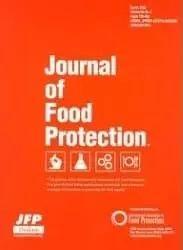
Alfalfa sprouts have been implicated in several salmonellosis outbreaks in recent years. The disinfectant effects of acidic electrolyzed oxidizing (EO) water against Salmonella enterica both in an aqueous system and on artificially contaminated alfalfa seeds were determined. The optimum ratio of seeds to EO water was determined in order to maximize the antimicrobial effect of EO water. Seeds were combined with EO water at ratios (wt/vol) of 1:4, 1:10, 1:20, 1:40, and 1:100, and the characteristics of EO water (pH, oxidation reduction potential [ORP], and free chlorine concentration)were determined. When the ratio of seeds to EO water was increased from 1:4 to 1:100, the pH decreased from 3.82 to 2.63, while the ORP increased from +455 to +1,073 mV. EO water (with a pH of 2.54 to 2.38 and an ORP of +1,083 to +1,092 mV) exhibited strong potential for the inactivation of S. enterica in an aqueous system (producing a reduction of at least 6.6 log CFU/ml). Treatment of artificially contaminated alfalfa seeds with EO water at a seed to EO water ratio of 1:100 for 15 and 60 min significantly reduced Salmonella populations by 2.04 and 1.96 log CFU/g, respectively (P < 0.05), while a Butterfield s buffer wash decreased Salmonella populations by 0.18 and 0.23 log CFU/g, respectively. After treatment, EO water was Salmonella negative by enrichment with or without neutralization. Germination of seeds was not significantly affected (P > 0.05) by treatment for up to 60 min in electrolyzed water. The uptake of liquid into the seeds was influenced by the internal gas composition (air, N2, or O2) of seeds before the liquid was added.
Electrolyzed anodic NaCl solutions [EW(+)], prepared by the electrolysis of 0.1% NaCl, have been shown to instantly inactivate most pathogens that cause food-borne disease. Elimination of food-borne pathogens does not necessarily guarantee food safety because enterotoxins produced by pathogens may remain active. We have tested whether EW(+) can inactivate Staphylococcal enterotoxin A (SEA), one of the major enterotoxins responsible for food poisoning. Fixed quantities of SEA were mixed with increasing molar ratios of EW(+), and SEA was evaluated by reversed-phase passive latex agglutination (RPLA) test, immunoassay, native polyacrylamide gel electrophoresis (PAGE), and amino acid analysis after 30 min incubations. Exposure of 70 ng, or 2.6 pmol, of SEA in 25 L of PBS to a 10-fold volume of EW(+), or ca. 64.6 103-fold molar excess of HOCl in EW(+), caused a loss of immuno-reactivity between SEA and a specific anti-SEA antibody. Native PAGE indicated that EW(+) caused fragmentation of SEA, and amino acid analysis indicated a loss in amino acid content, in particular Met, Tyr, Ile, Asn, and Asp. Staphylococcal enterotoxin-A excreted into culture broth was also inactivated by exposure to an excess molar ratio of EW(+). Thus, EW(+) may be a useful management tool to ensure food hygiene by food processing industries.

Electrolysis of a 0.1% (17.1 mM) solution of NaCl using separate anode and cathode compartments gives rise to solutions containing active chemical species. The strongly acidic anode solution (EW(+)) has high levels of dissolved oxygen and available chlorine in a form of hypochlorous acid (HOCl) with a strong potential for sterilization, which we have investigated here. Exposing Aspergillus parasiticus at an initial density of 103spores in 10 L to a 50-fold volume (500 L) of EW(+) containing ca. 390 mol HOCl for 15 min at room temperature resulted in a complete inhibition of fungal growth, whereas the cathode solution (EW( )) had negligible inhibitory effects. Moreover, the mutagenicity of aflatoxin B1 (AFB1) for Salmonella typhimurium TA-98 and TA-100 strains was strongly reduced after AFB1 exposure to the EW(+) but not with the EW( ). In high-performance liquid chromatography analysis, the peak corresponding to AFB1 disappeared after treatment with the EW(+), indicating decomposition of the aflatoxin. In contrast, the routinely used disinfectant sodium hypochlorite, NaOCl, of the same available chlorine content as that of EW(+) but in a different chemical form, hypochlorite (OCl-) ion, did not decompose AFB1 at pH 11. However, NaOCl did decompose AFB1 at pH 3, which indicated that the principle chemical formula to participate in the decomposition of AFB1 is not the OCl- ion but HOCl. Furthermore, because the decomposition of AFB1 was suppressed by pretreating the EW(+) with the OH radical scavenger thiourea, the chemical species responsible for the AFB1-decomposing property of the EW(+) should be at least due to the OH radical originated from HOCl. The OH in EW(+) was proved by electron spin resonance analysis.
Acidic electrolyzed oxidizing (EO) water, generated by electrolysis of a dilute salt solution, recently gained attention in the food industry as a nonthermal method for microbial inactivation. Our objective was to determine if EO water has potential to control foliar diseases in greenhouses. Test fungi suspended in distilled water were combined with EO water (1:9 water:EO water) for various time periods, the EO water was neutralized, and germination was assessed after 24 h. Germination of all 22 fungal species tested was significantly reduced or prevented by EO water. All relatively thin-walled species (e.g., Botrytis, Monilinia) were killed by incubation times of 30 s or less. Thicker-walled, pigmented fungi (e.g., Curvularia, Helminthosporium) required 2 min or longer for germination to be reduced significantly. Dilution of EO water with tap water at ratios of 1:4 and 1:9 (EO:tap water) decreased efficacy against Botrytis cinerea. The presence of Triton X-100 (all concentrations) and Tween 20 (1 and 10%) eliminated the activity of EO water against B. cinerea. EO water did not damage geranium leaf tissue and inhibited lesion development by B. cinerea when applied up to 24 h postinoculation. EO water has a wide fungicidal activity which could facilitate its use as a contact fungicide on aerial plant surfaces and for general sanitation in the greenhouse.
The fungicidal effectiveness of electrolyzed oxidizing (EO) water on peach [Prunus persica (L.) Batsch.] fruit was studied. Fruit were inoculated with a spore suspension of 5 105 conidia/mL of Monilinia fructicola [(G. Wint.) Honey] applied as a drop on wounded and nonwounded fruits, or by a uniform spray-mist on nonwounded fruits. Fruit were immersed in tap water at 26 C for 5 or 10 minutes (control), or treated with EO water varying in oxidation-reduction potential (ORP), pH, and free available chlorine (FAC). Following treatment, fruit were held at 20 C and 95% relative humidity for 10 days to simulate retail conditions. Disease incidence was determined as the percentage of fruits showing symptoms of the disease, while severity was expressed as lesion diameter. EO water did not control brown rot in wound-inoculated fruits, but reduced disease incidence and severity in nonwound-inoculated peach. Symptoms of brown rot were further delayed in fruit inoculated by a uniform-spray mist compared with the nonwounded-drop-inoculated peaches. Fruit treated with EO water held for 8 days at 2 C, 50% RH, did not develop brown rot, until they were transferred to 20 C, 95% RH. The lowest disease incidence and severity occurred in fruit immersed in EO water for up to 5 minutes. EO water having pH 4.0, ORP 1,100 mV, FAC 290 mg L-1 delayed the onset of brown rot to 7 days, i.e., about the period peach stays in the market from a packing house to consumer. No chlorine-induced phytotoxicity was observed on the treated fruit. This study revealed that EO water is an effective surface sanitizer, but only delayed disease development.

Definitive identification of free teliospores of Tilletia indica, causal agent of Karnal bunt of wheat, requires polymerase chain reaction (PCR)-based diagnostic tests. Since direct PCR amplification from teliospores has not been reliable, teliospores first must be germinated in order to obtain adequate DNA. We have routinely surface-sterilized teliospores for 2 min with 0.4% (vol/vol) sodium hypochlorite (NaOCl) to stimulate germination and produce axenic cultures. However, we observed that some spores were killed even with a 2-min NaOCl treatment, the shortest feasible duration. Decreasing the NaOCl concentration in our study from 0.4% to 0.3 and 0.2%, respectively, increased teliospore germination, but treatment times longer than 2 min still progressively reduced the germination percentages. In testing alternative methods, we found acidic electrolyzed water (AEW), generated by electrolysis of a weak solution of sodium chloride, also surface-sterilized and increased the rate of T. indica teliospore germination. In a representative experiment comparing the two methods, NaOCl (0.4%) for 2 min and AEW for 30 min increased germination from 19% (control) to 41 and 54%, respectively, by 7 days after treatment. Because teliospores can be treated with AEW for up to 2 h with little, if any, loss of viability, compared with 1 to 2 min for NaOCl, treatment with AEW has certain advantages over NaOCl for surface sterilizing and increasing germination of teliospores of suspect T. indica.

Electrolytically generated chlorine was injected into citrus microirrigation systems. Propagules of Phytophthora nicotianae var. parasitica, P. citrophthora, Fusarium spp., algae, and slime-forming bacteria were killed. Nematodes were found to resist free-chlorine levels in water of up to 50 g ml-1. Microemitters delivering chlorinated water were less frequently blocked by bacterial and/or bacterial slime than those delivering unchlorinated water. Soil and root populations of Phytophthora and nematodes under citrus trees in the field were unaffected by chlorinated water. No chlorine-induced phytotoxicity was observed on field-grown plants(.)

